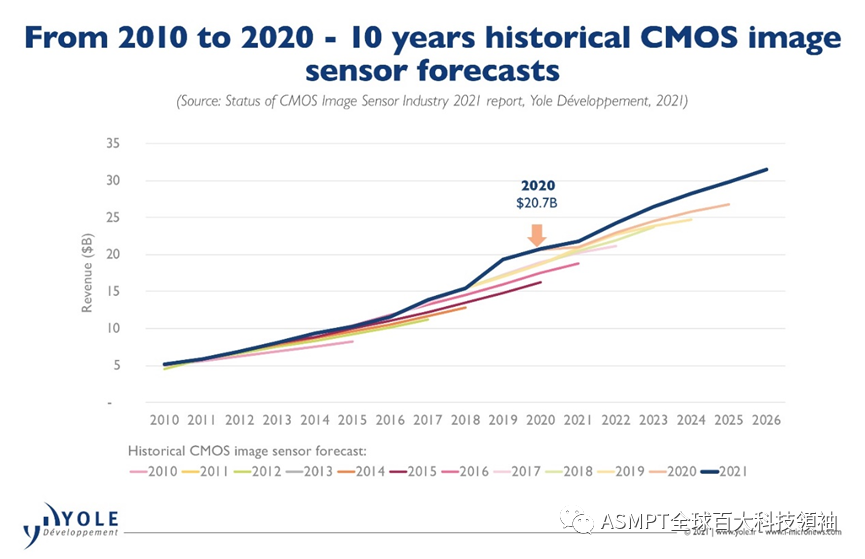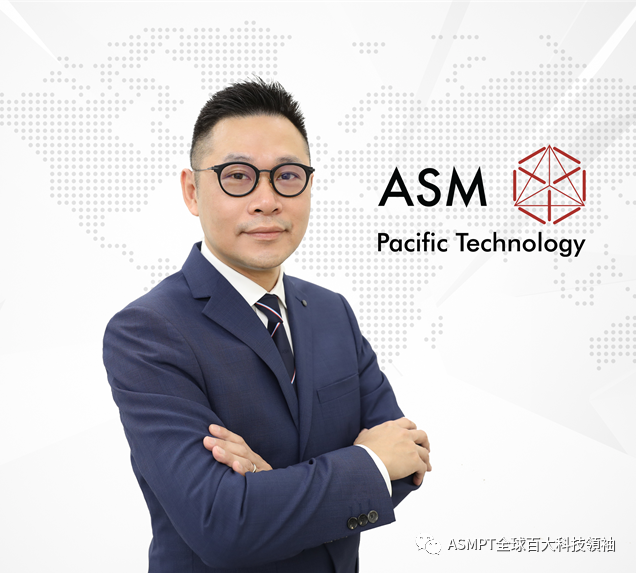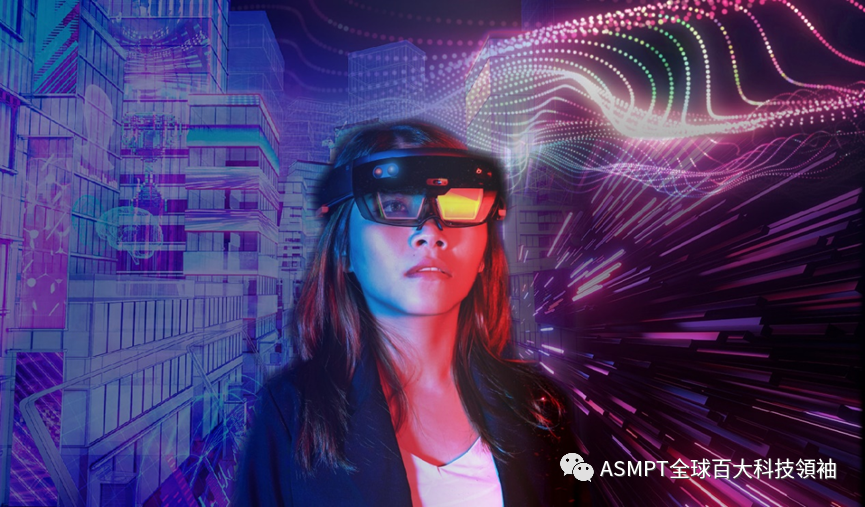ASM wire bonding machine ASMPT high-quality lens is favored and successfully entered the field of vehicle and metaverse
With the continuous advancement of semiconductor manufacturing processes, sensing technology has become more and more popular, making the demand for sensors continue to rise, and at the same time bringing many new technologies. According to Yole Développement, in addition to emerging application demands such as smartphone applications, automotive, medical and security, it is expected to drive the continuous growth of the CIS market in the future, and the global market size is expected to expand to US$31.5 billion in 2026.

Photo Caption: 2021 State of the CMOS Image Sensor Industry Report. Au Baolin, assistant vice president of CIS at Yole Développement ASM Pacific Technology (hereinafter referred to as ASMPT), said that the rapid development of smartphones from single-lens to multi-lens design shows that the assembly technology of major CIS lenses is gradually becoming mature. "ASMPT has always been optimistic that the application of CIS is an important factor leading to the development of an intelligent future in the world. We are using the advantages and experience of the mobile phone lens market to promote the development of CIS in different fields. Metaverse and other two fields.”

Mr. Au Baolin, Assistant Vice President of ASMPT CIS
ASMPT also observed that consumers' expectations for automobiles are changing. Vehicles are no longer just a means of transportation, but now need to incorporate various intelligent and safety technologies to ensure overall driving safety. Therefore, major automobile manufacturers are accelerating the use of artificial intelligence, machine learning and other technologies to create a new smart mobility space. However, the current major challenges in the development of self-driving cars are regulations, clarification of responsibilities, and safety guidelines. In addition, different markets and countries have different views on this. Therefore, we will continue to pay attention to changes and trends in different markets, and then provide the required products.
The quality of the lens determines the key to driving safety
The key to careful analysis of self-driving cars, which are highly anticipated by consumers, lies in the ability to actively detect changes in the surrounding environment of vehicles through technologies such as photographic lenses and sensor technologies, such as LiDAR, millimeter-wave radar, and ultrasonic radar. In addition to reporting to the car owner when an abnormal situation is found, it will also be equipped with mechanisms such as accelerator, steering and braking to assist the car owner in responding to various emergencies and ensure safety during driving. Although the aforementioned sensor technologies are improving day by day, the camera directly captures the real state of the surrounding environment and can help the car owner to accurately grasp the surrounding state during the driving process. Naturally, it is an important component to ensure the safety of the self-driving car during the moving process.
However, ASMPT believes that the self-driving car's ability to detect the surrounding environment depends not only on the system's image processing capabilities and back-end algorithms, but also on whether the camera can capture high-quality images. Different from the lens requirements of consumer electronics, automotive lenses involve road safety and even human life safety. Therefore, many auto manufacturers have extremely strict quality requirements for lens finished products, and will make purchases based on lens specifications according to the characteristics of self-driving systems and algorithms. standard.
"As the market demand for lenses has increased significantly, the competition between industries is also quite fierce. Many industry players choose to adopt price-cutting competition. Therefore, the focus of lens assembly is on cost rather than quality, and it is difficult to guarantee that it will not affect self-driving cars. Au Baolin explained: "In contrast, we pay great attention to product quality. In addition to purchasing high-precision manufacturing equipment, we have also established a set of precision monitoring mechanisms for the entire production process in the production line, which can fully grasp the entire lens assembly. The production state of the process, and then pursue the quality and precision of the entire production line, so as to provide high-quality lenses that meet the needs of self-driving cars.” On the premise of improving the quality of lens assembly, ASMPT has also acquired the world’s leading active lens module assembly. The equipment factory can meet the mass production needs of major European and American customers, and even participate in the project development of new products. This acquisition will help ASMPT implement the business philosophy of high performance, high productivity, high assembly precision and stability, and ensure that it can provide customers with high-quality products.
The Metaverse issue rams the demand for camera lenses
In addition to self-driving cars, the metaverse that can pull consumers and businesses into a huge virtual world is another hot topic recently, and it is expected to bring great changes to the electronic product supply chain. Although there is no research institution to fully define the Metaverse, it has attracted various companies to expand their investment in this field. Even Facebook has changed its name to Meta and announced its determination to enter the Metaverse. It is expected that in the next few years, the world will have Enter a new generation of the Metaverse.

Caption: The world is expected to enter a new era of the Metaverse in the next few years. As VR/AR devices are the key path to the metaverse, ASMPT can provide immersive effects of human-computer interaction, and more and more related applications appear on the market. Therefore, the market demand for lenses is also increasing. It is estimated that the potential market range (TAM) of lenses for VR/AR will increase from 120 million US dollars in 2021 to more than 10 times in 2025, and is expected to increase to 2030. 4.6 billion yuan.
Au Baolin pointed out that the camera lens in VR/AR equipment is mainly responsible for simultaneous positioning and mapping (SLAM), as well as pass-through image capture (Pass Through Viewing). Under the metaverse trend, we believe that RGB cameras will gradually replace grayscale cameras to enhance interaction with the external environment. Second, camera lenses used to capture eye movement help improve the accuracy and precision of tracking, gesture and eye tracking, and when combined with depth-sensing technology, increase the interaction between computers, humans and the environment for mixed reality. interaction between.
In response to trends such as self-driving car systems and the Metaverse, ASMPT will continue to develop the high-quality lens market based on the dazzling performance of mobile phone lenses. in order to maintain competitiveness in the market.